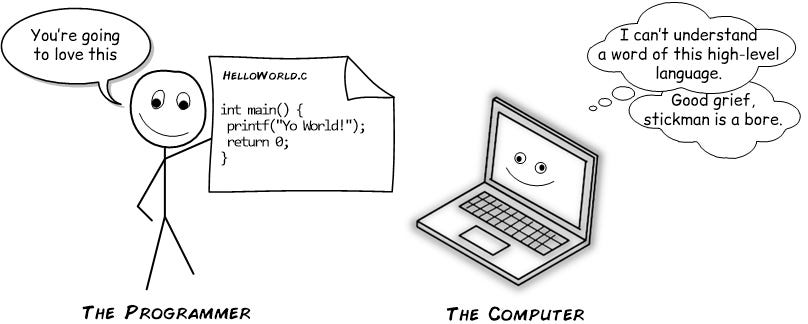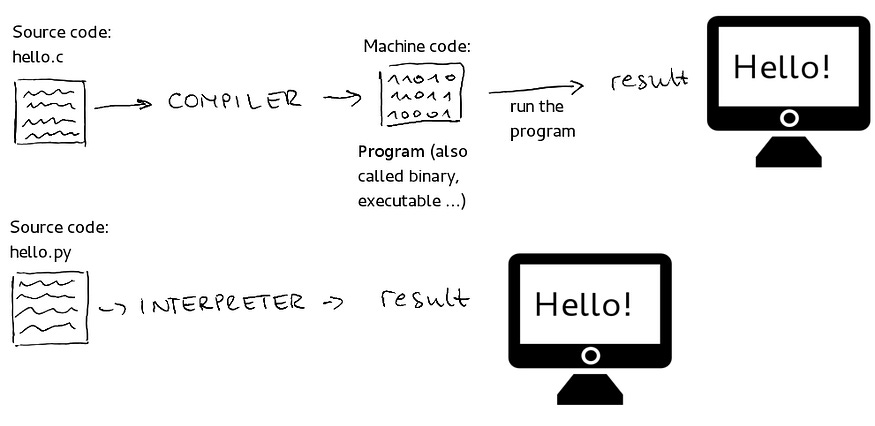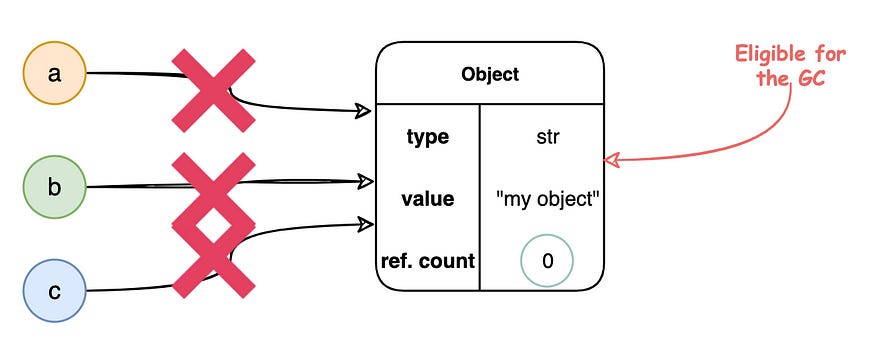In the coding community, it is well-known that the snake programming language doesn’t win any races.
I mean, Python is great and everybody loves it.
“But is just slow…”
In this article, I will go through the different features of Python and we will understand why these make it one of the most complete languages nowadays — with the drawback of not being so fast.
But first, let´s grasp some fundamentals about programming languages.
Levels of abstraction
As you may know, programming languages are often described by their level of abstraction.
A low level of abstraction indicates that the language is closer to the hardware (difficult to interpret)
A high level reveals that the code is closer to the user (easier to interpret).
C++, PHP, Java, Python… are all considered modern (or high-level) programming languages as they can run in almost any type of system.
In assembly, you have to write a distinct program according to the instructions of each specific processor (you can´t run the same code on different CPUs).
For example, if you create a program that prints “Hello world” and you send the code to your friend (which has a different computer model), by the time he tries to execute it, it will probably fail.
Modern languages — The last level of abstraction

Despite being the highest abstraction from machine code, there are also hierarchies in the last layer of the pyramid.
On one hand, you can find procedural languages like C where you need to know exactly what you’re doing step by step. This comes with the advantage of being very efficient and the disadvantage of being complex and not so flexible.
On the other hand, other languages make tasks easier by letting you work with more readable and flexible code.
This is the case of Python. Which you can use for almost anything and is easy to implement but has the downward of not being so efficient for certain tasks.
But why exactly is Python so “slow”?
Let´s revise some of the language features to answer this question.
## Interpreted language
In the first place, Python is an interpreted language, which means that the code is read and executed by a software program (called an interpreter), line by line, at runtime.
This is one way in which you can transform your code into machine code.
Compiled languages
Another way you can make your code “understandable by a machine” is through the process of compilation.
In this case, the source code is transformed into machine code by a compiler before it is actually run on the computer.

# Why the interpreted way is slower?
In interpreted languages, each line of source code is translated into machine code on the fly, during execution.
This means that every time a program runs, the interpreter must parse, analyze, and execute the code, which adds overhead compared to running pre-compiled machine code directly.
For example: If a piece of code is run multiple times (e.g., inside a loop), an interpreter must read and translate it each time it’s encountered.
In contrast, a compiled program would run the machine code directly, without needing to re-translate it each time it passes through the loop.
## CPython and its Global Interpreter Lock (GIL)
The standard Python interpreter is CPython. It is written in C and Python, and it compiles Python code into bytecode before interpreting it.
To prevent multiple native threads from executing Python bytecodes at once, CPython uses the Global Interpreter Lock.
This lock is necessary because CPython’s memory management is not thread-safe.
However, it can be a significant bottleneck in multi-threaded programs, limiting the performance gains from multi-threading on multi-core processors.

## Dynamic typing
In addition, Python is dynamically typed, which means that you don´t have to declare the type of a variable when you initialize it.
# But how does this affect efficiency?
Well, in dynamically typed languages, types are determined at runtime.
This means the interpreter needs to do type-checking every time it executes a piece of code.
This requires additional processing to determine the type of each variable and how operations should be performed based on those types.
# And what is the antithesis of dynamic typed languages?
Static typed languages!
In this case the type of a variable is known at compile time instead of at runtime.
As a consequence, the types are known at compile time, and compilers can optimize the code execution more aggressively. This results in faster but not so flexible programs.
Some languages that use this approach are C++ and Rust.

## Garbage collection
Garbage collection is a form of automatic memory management that a programming language runtime system uses to reclaim memory that is no longer in use by the program.
Python automatically manages memory allocation and deallocation for its objects through garbage collection.
The primary method it uses for garbage collection is reference counting. Each object in Python has a reference count, which is the number of references pointing to it.
When the reference count drops to zero, meaning no references to the object remain, it is immediately removed from memory.

However, garbage collection is a double-edged sword…
It greatly simplifies memory management by automatically cleaning up unused objects, which helps prevent memory leaks and other bugs related to manual memory management.
However it introduces overhead and unpredictability that can impact the performance of an application.
Conclusion
In conclusion, the four main features that make Python slow are:
An interpreted execution that adds a layer of abstraction between the code and the machine language, slowing down the execution compared to compiled languages.
A Global Interpreter Lock that stops multi-threaded programs from fully utilizing multi-core processors.
Dynamic typing, that determines the type of an object at runtime, which means more work for the interpreter during execution.
And in the last place, garbage collection, as collecting unused objects can add latency to the program execution, especially when dealing with a large number of objects or complex data structures.
But let me tell you something…
If you´re a Python lover and you want to build a fast program. Is not the end of the world!
There are many ways in which you can speed up your Python code.
In fact, have you ever heard about Cython, Numba, Numpy, PYPY…?
If the answer is no, don´t worry because we´ll be covering them soon, so stay tuned!



